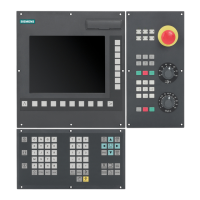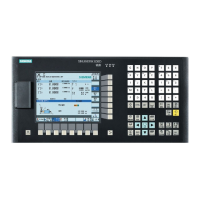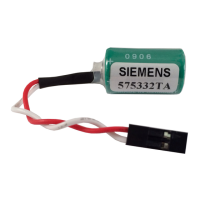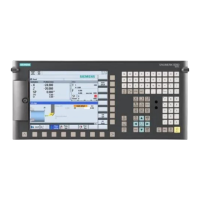Cycles
9.11 Oblique plunge-cutting – CYCLE413
Cylindrical grinding
188 Programming and Operating Manual, 07/2009, 6FC5398-4CP10-2BA0
Z_SCH (shoulder dimension in Z)
The Z_SCH parameter is used to specify the width of the shoulder.
WIN (oblique plunge-cut angle)
When performing oblique plunge-cutting using a straight wheel, this parameter must be
programmed. When an inclined wheel is used, the contents of the TPG8[ ] parameter (angle
of the inclined wheel) are taken into account in the cycle. The contents of WIN are then
ignored.
B_ART (machining type)
The B_ART parameter is used to define the machining type used to machine a technological
section. Possible values for B_ART lie in the range between 1 and 3 with the following
meaning:
1 = roughing
2 = finishing and fine-finishing
3 = roughing, finishing and fine-finishing
A_LU (air allowance)
The term 'air allowance' is used to denote the distance between the starting position in Z and
the stock allowance for roughing.
A_SR, A_SL, A_FSL (allowance)
For the various machining steps, different values can be defined for the allowance. These
refer to the nominal diameter.
A_SR Roughing allowance
A_SL Finishing allowance
A_FSL Fine-finishing allowance
F_SR, F_SL, F_FSL (feedrate)
Different feedrates can be specified for the individual machining steps. They are
programmed in [mm/min].
F_SR Feedrate for roughing
F_SL Feedrate for finishing
F_FSL Feed rate for fine finishing
TIME (sparking-out time)
After reaching the workpiece finished dimension, the tool dwells at the end position for a
defined time. This time is called 'sparking-out time'. It is programmed in [s].
MZ (measurement control)
The MZ parameter is used to specify whether a measurement control is used.
0 = No measurement control
1 = With measurement control
KS (acoustic emission sensor)
The KS parameter is used to specify whether an acoustic emission sensor is used.
0 = without acoustic emission sensor
1= with acoustic emission sensor

